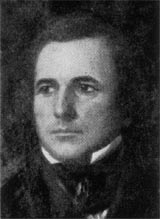John Lawrence Manning facts for kids
Quick facts for kids
John Lawrence Manning
|
|
|---|---|

John Lawrence Manning, 1816–1889
|
|
| 65th Governor of South Carolina | |
| In office December 9, 1852 – December 11, 1854 |
|
| Lieutenant | James Irby |
| Preceded by | John Hugh Means |
| Succeeded by | James Hopkins Adams |
| Member of the South Carolina Senate from the Clarendon District | |
| In office November 23, 1846 – December 9, 1852 |
|
| Preceded by | Levy F. Rhame |
| Succeeded by | John Isaac Ingram |
| Member of the South Carolina House of Representatives from Clarendon District | |
| In office November 28, 1842 – November 23, 1846 |
|
| Personal details | |
| Born | January 29, 1816 Clarendon County, South Carolina |
| Died | October 24, 1889 (aged 73) |
| Resting place | Trinity Episcopal Church, Columbia, South Carolina |
| Political party | Democratic |
| Spouses | Susan Frances Hampton Sally Bland Clarke |
| Military service | |
| Allegiance | Confederate States of America |
| Branch/service | Confederate States Army |
| Rank | Colonel |
| Battles/wars | American Civil War |
John Lawrence Manning (sometimes spelled John Laurence Manning) (January 29, 1816 – October 24, 1889) was the 65th Governor of South Carolina, from 1852 to 1854. He was born in Clarendon County. He attended South Carolina College, where he was a member of the Euphradian Society.
In 1838, John L. Manning married Susan Frances Hampton (1816–1845), daughter of General Wade Hampton I and his wife, Mary Cantey, and half-sister of Colonel Wade Hampton II, who though he alone inherited their father's considerable fortune, shared it equally with her and another sister. She died giving birth to their third child. In 1848 Manning married Sally Bland Clarke and had four children by her. During his term in office, he resided at the Preston C. Lorick House.
John Manning and his wife, Susan, had Millford Plantation built in 1839 near Pinewood, South Carolina. It is now a National Historic Landmark.
According to the 1860 United States Slave Census Schedule John Manning owned 670 enslaved African-Americans, making him the 6th largest American slave owner at the time.
He is interred in the churchyard at Trinity Episcopal Church in Columbia, South Carolina.
Honors
The town of Manning, South Carolina was named for him.

